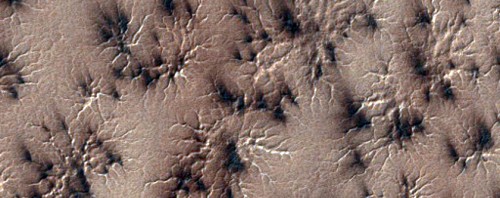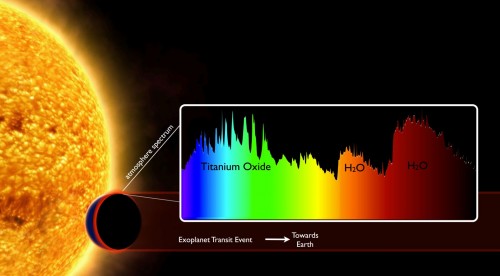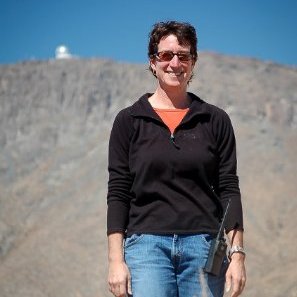- Date: 15 Nov 2016
- Comments: (0)
- Categories: For Everyone
“Spiders” on Mars
The South Pole of Mars is a strange and wonderful place. Many of its surface features are sculpted by the never-ending cycle of freezing and thawing of exposed carbon dioxide ice and subsurface water ice. These features includes “spiders” (radially organized channels carved in the surface), pitted sheets of carbon dioxide gas trapped below the thawing ice sheet, and by the freezing and thawing of water ice permafrost.

New location on Mars identified by the Planet Four: Terrains project shown to have spiders. Image Credit: NASA/JPL/University of Arizona
In late October Meg Schwamb, an assistant scientist at Gemini North, presented the project Planet Four:Terrains at the joint American Astronomical Society’s Division For Planetary Science (DPS) and European Planetary Science Congress (EPSC) meeting. Planet Four: Terrains is a citizen science project that enlists the general public to help identify these different surfaces in orbital images from the Context Camera (CTX) aboard Mars Reconnaissance Orbiter. These areas would then be imaged with the spacecraft’s High Resolution Imaging Science Experiment (HiRISE) camera, the highest resolution camera ever sent to Mars, in order to monitor the evolution of these areas to better understand how the carbon dioxide process compares to other areas previously studied on Mars.
A primary aim of Planet Four: Terrains was to identify areas with channels and pits (dubbed spiders). These channels indicate regions where, in the summer, carbon dioxide jets send dust and dirt aloft through cracks in the thawing carbon dioxide ice sheet – then, surface winds blow the material into the hundreds of thousands of dark fans observed from orbit. The project launched in June 2015, when the South Pole of Mars was in darkness, but starting in July 2016 sunlight returned to the South Pole. Once the Sun returned, Meg and her collaborators hoped that Planet Four: Terrains would find new areas of jet activity. The success of the project is revealed by the nearly 10,000 people who helped to identify over 20 new HiRISE targets. The public effectively commandeered the Mars Reconnaissance Orbiter in order to study in further detail these interesting regions with observations from the HiRISE camera over the current Spring and Summer seasons in the Southern Hemisphere of Mars.

A different kind of spider. These pits with radiating channels spotted on the South Pole of Mars have been dubbed ‘spiders’ due to their appearance. These channels are thought to be carved into the surface by the repeated cycle of deposition and sublimation of a seasonal carbon dioxide ice cap each Mars year (which is just under two Earth years). Image Credit: NASA/JPL/University of Arizona
The Planet Four: Terrains project isn’t finished yet. New images have been uploaded to the website covering new regions of the South Pole not part of the original search. These CTX images have never before been looked at by human eyes in such detail before. There is bound to be something interesting. You can read more about the project in the NASA press release and an article from Space.com.








